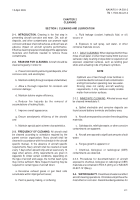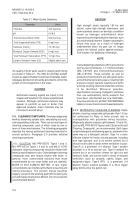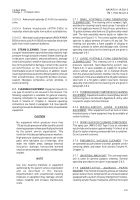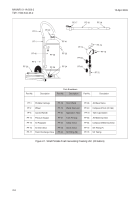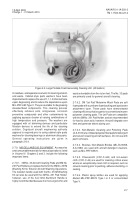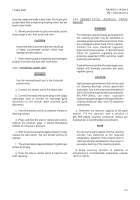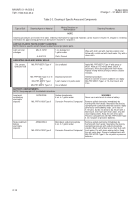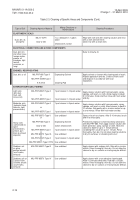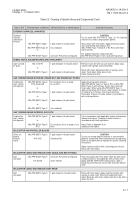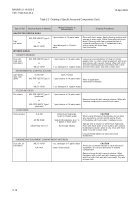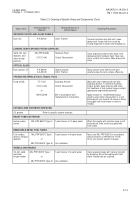TM-1-1500-344-23-2 - Page 34 of 240
2-10
NAVAIR 01-1A-509-2
TM 1-1500-344-23-2
15 April 2009
CAUTION
Caution shall be exercised when loading
components with areas which can entrap water.
Position parts in the cabinet and baskets such
that the cavities which can hold or entrap water
are face down. It is imperative that
suitable fixtures and/or baskets are used to
secure components during the cleaning cycle.
Failure to do so may result in damage to the
components being cleaned by the high pressure
impingement spray.
c. Place components to be cleaned into parts washer.
Components shall be secured to the turntable, or placed
in a basket that is secured to the turntable.
CAUTION
Parts shall not be left unattended in the washing
cabinet. Once the cleaning cycle is complete,
the inside environment of the cabinet will
become very hot and humid. Parts left
unattended, or not removed within the required
time, may develop corrosion. Follow the
recommended manufacturer’s instructions for
the removal of cleaned parts.
d. Set the wash cycle timer for 3-30 minutes
depending upon the type of soil to be removed and the
quantity of soil on the parts. For light degreasing, a
3 minute cycle may be sufficient, while heavily soiled
and baked on grease may require a full 30 minute cycle.
Run the wash cycle, and allow components to cool
before handling.
e. If the cleaned part is subjected to an immediate
inline process, i.e., fluorescent penetrant inspection, or
painting, or in cases where precision cleaning is required,
rinse the part with fresh clean water and thoroughly dry.
f. For bare steel parts which have been cleaned/
rinsed and will not be processed immediately, wrap in
VCI film (MIL-PRF-22019) or apply CPCs
(MIL-PRF-81309 Type II, followed by MIL-PRF-16173
Grade 4).
2-9. CLEANING PROCEDURES.
2-9.1. WARNINGS AND CAUTIONS. The following
warnings and cautions shall be observed during aircraft
cleaning operations:
2-9.1.1. Electrical Warnings.
a. Aircraft and/or other equipment shall not be
washed, cleaned, or inspected on an outdoor wash rack
when an electrical storm is in the immediate area.
b. Open all circuit breakers associated with battery
power (refer to applicable aircraft manuals) prior to
application of flammable solvent cleaners.
c. In order to guard against the danger of static
electricity, aircraft shall be electrically grounded during
all cleaning operations and when moored or parked.
d. Before cleaning electrical and avionic equipment,
make sure electrical power is disconnected. Injury or
death may otherwise result.
2-9.1.2. Personal Protection. Consult the local safety
office for personal protective equipment (PPE)
requirements. The following Warnings apply.
a. Wear rubber gloves, chemical or splash proof
goggles, and water resistant boots during cleaning
operations using cleaning compounds MIL-PRF-85570
or MIL-PRF-85704. Wet weather clothing is not required
except during cold weather. If cleaner is splashed in
eyes, rinse thoroughly with fresh water for 15 minutes
and report to medical facility. Remove clothing saturated
with cleaning solution immediately and flush exposed
skin areas with fresh water.
b. Cleaning solutions are slippery. Maintenance
stands shall be used where practical. Safety harness
and safety lines must be used when standing on upper
surfaces of aircraft during cleaning operations.
2-9.1.3. Solvent Warnings.
a. Do not use synthetic wiping cloths with flammable
solvents, such as aliphatic naphtha (TT-N-95), MEK, or
MIL-T-87177 paint thinner. Synthetic cloths can generate
Back to Top


